KYOTO
- chuckmeltzer
- Jun 4
- 5 min read
Updated: Sep 3
We arrived in Kyoto from Singapore a day before the National Geographic Inside Japan tour to acclimate and explore on our own. Before discussing Kyoto, I must mention the ordeal of getting through Osaka Airport. Our Singapore Airlines flight was excellent as usual, but the immigration process in Osaka was chaotic. We spent two hours in a line moving at a snail's pace, seemingly due to more visitors than available officers. There is a “Visit Japan Web QR code” we could have downloaded in advance, but we weren't aware of it until it was too late, and it didn't seem to save much time for those who had it. Despite my efforts to be organized for these trips, I couldn't remember if we had a driver from Nat Geo picking us up. While waiting in line, I checked Uber to see if we could get a car to Kyoto, which is about 90 minutes north of Osaka. Fortunately, when we exited with our luggage, a pleasant young lady was holding a sign that boldly read “MELTZER/JOHNSON”, and we were very relieved. National Geographic earned a gold star for not abandoning us and waiting patiently.
The following morning, we woke up to a gorgeous sunny day in Kyoto, free from Singapore's heat and humidity. We chose to replicate our first day's activity in Singapore by visiting the botanical gardens. The cherry trees (Sakura) were in full and perfect bloom. We took a leisurely walk along a river to reach the gardens, which was a delightful way to begin this segment of our journey.
On our walk to the garden, we also saw spirea and forsythia in bloom. Seeing all this beauty reminded me of our former property on Chalk Hill, and I felt a bit overwhelmed with nostalgia for Sonoma County. The timing of the bloom was similar too, as our early spring garden on Chalk Hill always put on a big show at this time of year with the fruit trees and shrubs.
Upon arriving at the botanical gardens, we found them to be beautiful as well, even though it was slightly early in the season to witness their full splendor. Nonetheless, we were welcomed by tulips, mustards, lunaria, and quince.
Without focusing too much on the cherry trees, they were the main reason for scheduling the trip at this time, and we were not disappointed. The timing and location of the bloom can be unpredictable, so we were very fortunate!!!


As we returned to our hotel, we encountered the first of numerous shrines we would see on this trip, with its striking vermillion gates boldly announcing "welcome to Japan." The landscape design's simplicity and beauty, which seamlessly integrates hardscape, plants, rocks, Buddhas, bridges, and water features, is a frequent observation.
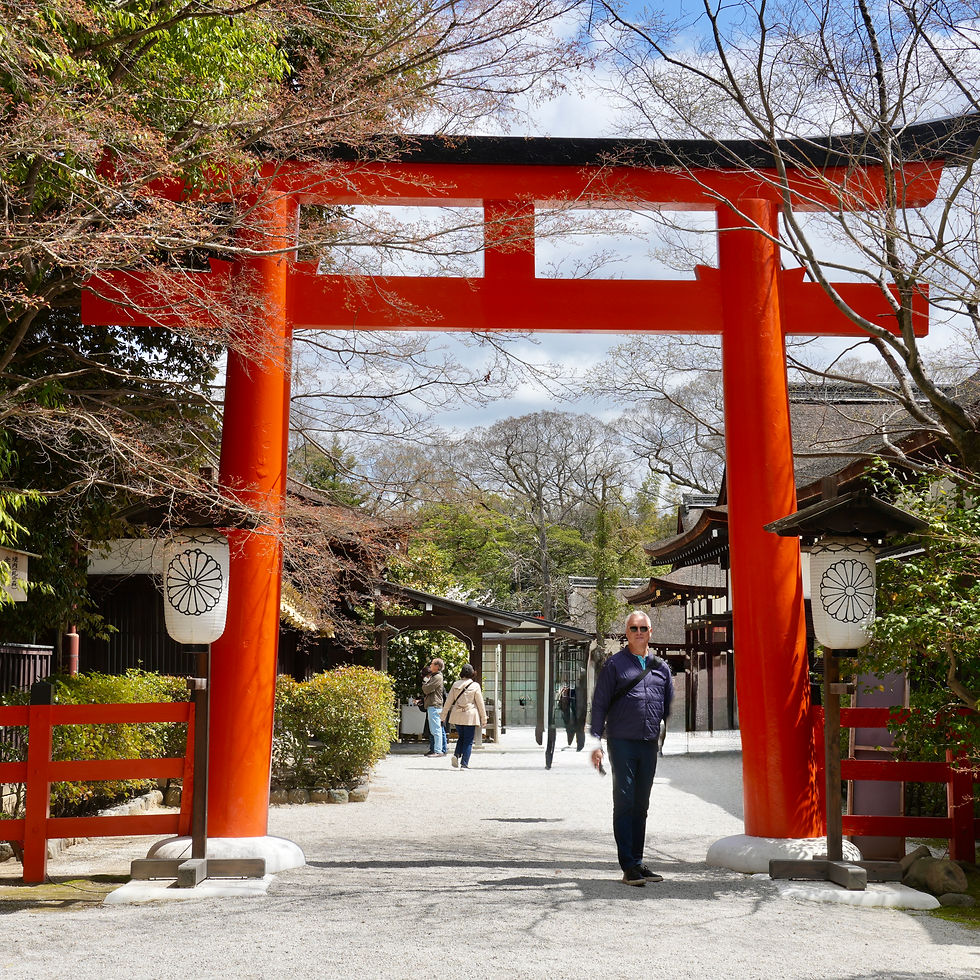
That afternoon, we went to see a performance titled “Gear”, a non-verbal show featuring five actors, enhanced by excellent music, lighting, sets, magic, mime, dance, and pure entertainment. It had a Cirque du Soleil vibe, but with less emphasis on acrobatics. It was fantastic!!!
Dinner was steak, but not just any steak; we indulged in Kobe/Wagyu to experience its uniqueness, especially since we were about to begin our 10-day journey with Nat Geo and numerous Japanese meals which we knew would be lots of fish, tofu and other very healthy options. The meat was exceptionally tender due to how marbelized it was and virtually melted in our mouth.
Kyoto was the imperial capital for over a thousand years, from 794 to 1868. Many wooden temples and gardens from that period have been collectively recognized as a UNESCO World Heritage site.
We visited the 14th-century Ten Ryuji Temple, regarded as one of the city's prominent Zen temples, and admired its stunning grounds and gardens. The gardens reminded me of the one my friend Felice created at her home in Sebastopol. I hadn’t fully appreciated its Japanese influences until this trip.

Outside the temple’s north gate, we wandered through Arashiyama’s bamboo grove with bamboo filling the hillside as far as the eye could see.
We then journeyed into the wooded hills southeast of the city to the Kiyomizudera Temple, renowned for its expansive wooden terrace that juts out from the main hall. Strolling along the terrace offers sweeping views of the maple and cherry trees below, with Kyoto’s skyline visible in the distance. It was enjoyable to observe all the people, especially the young women dressed in kimonos. The Spring cherry blossoms, known as Sakura, represent a significant time of the year and are celebrated in a traditional manner. Although the crowds were large, everyone remained patient, with no yelling or jostling. You can spot my silver fox in the middle, taking it all in.

To conclude our day of touring, we took a brief stroll through Nishiki Market, where vendors offer food and various knickknacks. Nishiki Market resembles the covered arcades of Paris but is much bigger extending for several blocks in multiple directions.
That evening, during the National Geographic welcome dinner, we encountered a geisha-in-training. She talked about her journey in adopting the geisha lifestyle, which includes extensive hair and makeup, wearing kimonos, engaging in music and dance, and acting as a hostess. We also had the pleasure of watching a brief performance.
The next day, we continued touring Kyoto and strolled through the elegant Zen rock garden at Ryoanji.

Shintoism is a native belief system centered on the spirit and everyday life. In Shinto, there are countless spirits known as kami, but no single "creator" deity. These spirits are thought to reside in all things, including natural forces and notable landscape features. Kami are honored at shrines, both large and small, public and private. Public shrines have priests, and the kami are honored through various rituals and practices involving purification, which is why hand washing is a significant part of these rituals. Perhaps this is why the Japanese also hold their Toto bidet toilets, which are ubiquitous, in high regard?
Our next destination was Kinkakujicho, also known as the “temple of the golden pavilion.”
Additionally, the Sanzenin Temple features a serene garden. A significant learning from our trip is that if it's a temple, it belongs to Buddhism, while a shrine is associated with Shinto. Both religions have numerous deities for various situations.
Wrapping up a busy day of exploring, we visited a nearby sake brewery to understand its history and production process. We discovered that the extent to which the rice is polished plays a crucial role in determining the final flavor and quality. Typically, average sake involves polishing 50% of the rice, better-than-average sake requires 60%, and super premium sake can have up to 99% polished. Cheers!!!-






















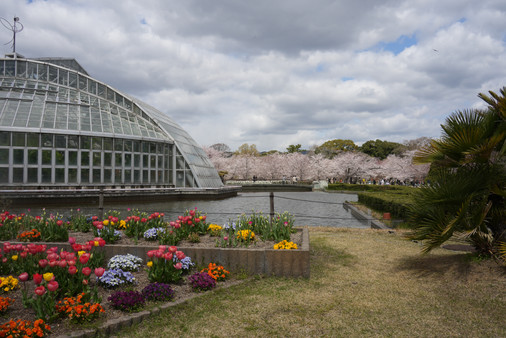









































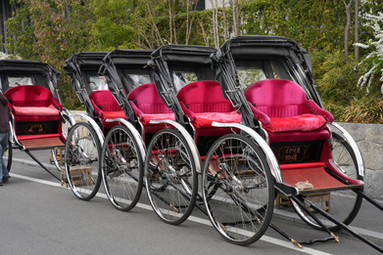











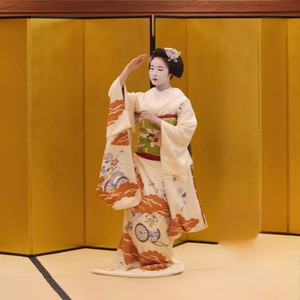







































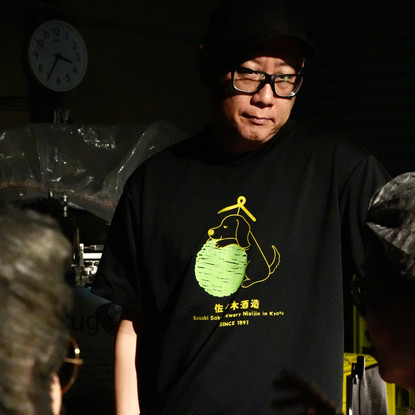










Comments